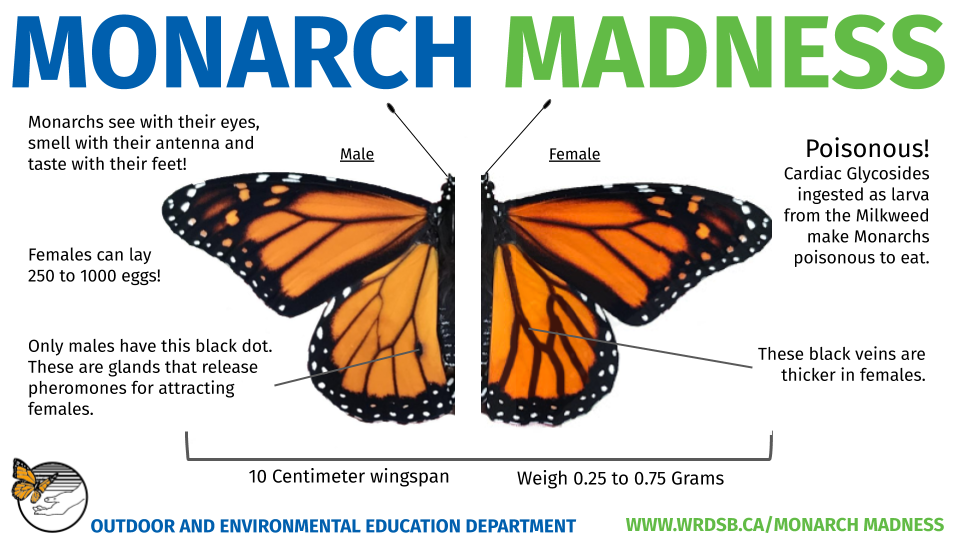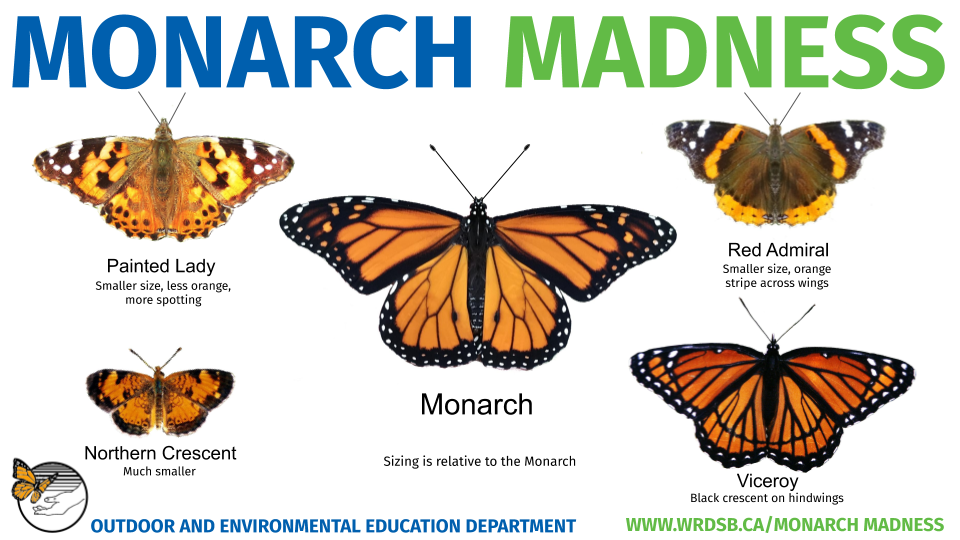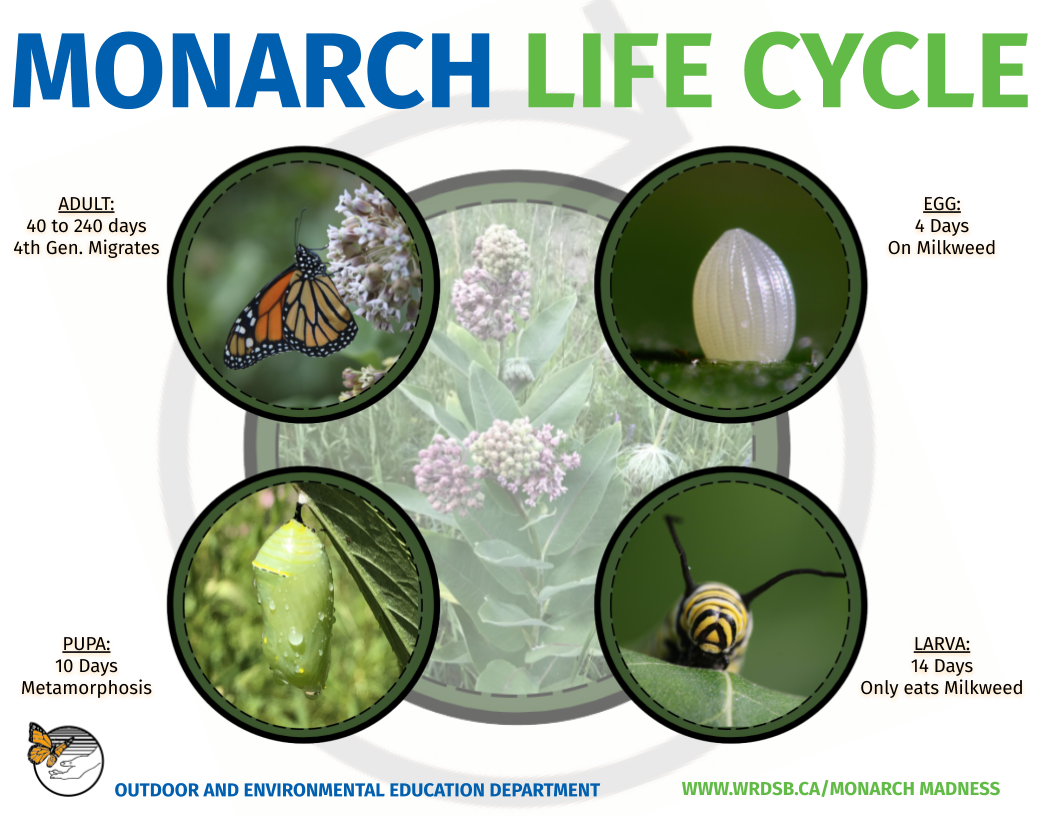Monarchs are a large, beautiful and iconic species of butterfly. Their striking orange-and-black colouration is almost unmistakable as they flap and glide over fields and gardens. Almost everyone has seen one. They have broad distribution in North America and can be found in diverse habitats including farmers fields, road sides, school yards and even our backyards!
For a long time they could be found nearly everywhere in North America, but that is changing. Monarch Butterfly populations have been in decline for approximately 25 years, and they are now classified as ‘Endangered’ in Canada. There are a few reasons for this decline in numbers – one is a decline in milkweed. Milkweed is the only plant that the caterpillars of Monarchs eat, and it is essential for Monarch survival. Milkweed has little known monetary value, and has been widely exterminated as a ‘weed’. If we would like to continue enjoying the beautiful Monarch in our backyards, we must provide the Monarchs with the Milkweed they need. To identify Milkweed check out this page.
Did you know that male and female Monarchs look different? Check it out!
While the Monarch Butterfly is hard to miss, it isn’t hard to mis-identify! While out searching for Monarch butterflies, be careful not to be fooled by some similar-looking butterflies, including a mimic – the Viceroy. There are a few other butterflies that are similar enough that sometimes observers will assume they are Monarchs even though they are not. Check out this handy resource developed by Al Woodhouse to help clear up any confusion!
If you would like a print version to use at home or with a class, download the pdf version here: Monarch ID _ Legal Size. We also have a letter size if that is preferred: Monarch ID_Letter Size.
Monarchs have a unique life cycle. They are one of only a handful of invertebrates that migrate long distances. Check out the life cycle diagram below.
An adult Monarch can lay between two hundred and 1200 eggs, each one only a few millimetres in size. After about four days the egg will hatch and a beautiful white, yellow-and-black caterpillar will emerge. Over the next two weeks, the caterpillar will eat voraciously on Milkweed, its host plant. The caterpillar will then find a safe place to pupate and form a chrysalis in which to undergo metamorphosis. This process takes about ten days, at which time an adult Monarch will emerge. From egg to adult in twenty eight days! This adult may only live for a few weeks as it finds a mate and lays its own eggs. Every fourth generation is a little different. The weather by this point will be getting colder and day length shorter. This generation of butterfly will migrate close to four thousand kilometres to central Mexico where it will overwinter. This generation can live six to eight months before beginning the migration back to North America.
Monarch caterpillars have five phases of development called ‘instars’. Check out the pictures below to see the five instars and learn how to identify them.
















